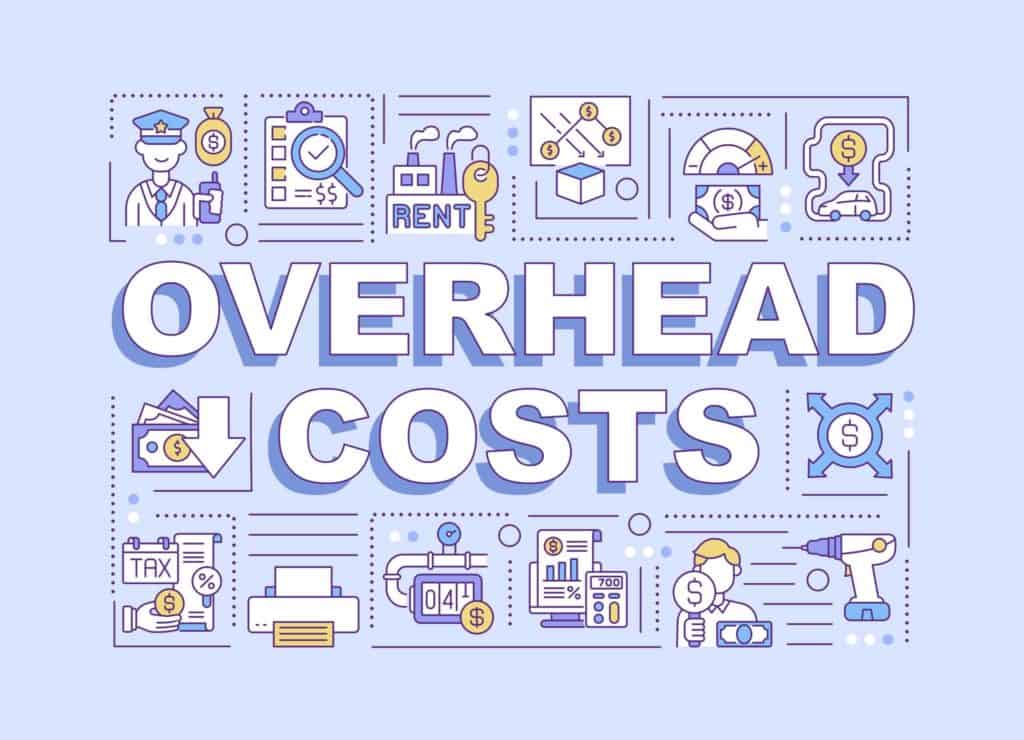What are Construction Overheads?
Construction Overheads refers to costs that cannot be directly attributed to one project, but instead are costs related to running the company and therefore apply to all projects the company completes. These costs can also be known as indirect costs.
Poorly tracked indirect / overhead costs can give you a false sense of job performance, so how can we calculate and distribute them?
Let’s take a look at what these costs are and how to allocate them
Direct Costs
First of all it is important to know what are not Overheads. Construction costs that are specifically allocable to a construction project are typically referred to as direct costs. Common direct costs are often made up of materials, direct labour and subcontractor costs. They are typically easy to assign to a specific construction project.
Indirect Project Costs
Indirect costs are expenses that relate to your project activity. Unlike a direct cost, though, an indirect cost is tied to multiple projects or difficult to tie to one project. Let’s look at an example, a construction contractor buys ten tons of hardcore for Project A, if it wasn’t for that one project, the cost wouldn’t exist, right? So that’s pretty clear it’s a direct cost to that project.
If the contractor uses company machines to spread and compact the material of course it wouldn’t be fair for Project A to shoulder all the expenses for that piece of equipment like a direct cost. Instead, every project that uses the machinery has some responsibility for it needing oil, service work, depreciation etc. Therefore, these are indirect costs they might consider as overheads.
In short, when several projects are responsible for the expense, several projects benefit from it, but not all jobs necessarily relate to it equally.
General & Administrative Costs
A general & administrative cost might be one that applies to the general running of the business. All projects probably benefit from it more or less equally. Examples include office rent and utilities, administrative salaries, advertising, general liability insurance, and many more.
Generally G&A costs are relatively stable despite fluctuation in the number and progress of your active projects. They support your ability to quote, take on and bill projects. If you’d still have the expense even if you had no active jobs (rent, for example), that’s likely G&A cost.
In general, showing a connection between one job and its effect on a G&A expense is quite difficult. Can you see how difficult it might be to allocate more printer ink to one project!
Allocation of Construction Overheads
There are several methods to allocate indirect and G&A costs to projects. Companies should use the method that most closely matches their business type and that most accurately distributes costs to the projects. Let’s take a look at some methods:
Activity Based Allocation
- Labour Hours
Contractors who mainly provide labour may want to allocate their indirect & G&A costs based on the number of labour hours in a period. To do this, find the total indirect costs and the total labour hours for the period, then divide the hours into the costs to determine the cost per hour. You can then allocate this cost for every hour of work performed on each project.
- Labour Costs
Another method for contractors who mainly provide labour to allocate their indirect labor costs. To calculate the distribution, divide total labour costs into total indirect costs to get the percentage of indirect costs. Then, take the percentage and multiply it by the labor costs for each project. This is the additional amount that should be allocated to each project.
- Material costs
For contractors who mainly provide materials, basing the allocation on material costs may be more accurate. The math is similar to that used for labour costs — just substitute material costs.
- Equipment hours
If your company allocates costs by equipment, then this could be the calculation that you want to use. It’s similar to the labour hours calculation — just substitute equipment hours for the labour hours.
Predetermined Construction Overheads
As described in our last blog 5 Steps for a Successful Construction Project Budget an effective method is to establish what your construction overheads allowance should be on a project budget, this is done by calculating your overhead percentage and ensuring this is covered in your project budget. The math here is relatively straightforward.
Total overhead costs last year / Total sales last year = Overhead Rate
To get a percentage instead of a decimal after you first divide, multiply the result by 100. This will give you a percentage number that you can easily work with for a greater understanding of your overheads.
For example, if you have a 10% overhead rate, this means that your company invests 10 cents in overhead for every dollar that you make. The appropriate overhead rate is industry-specific, so you should take some time to research what the standard is for businesses in your region and that your rate is in the same ballpark.



